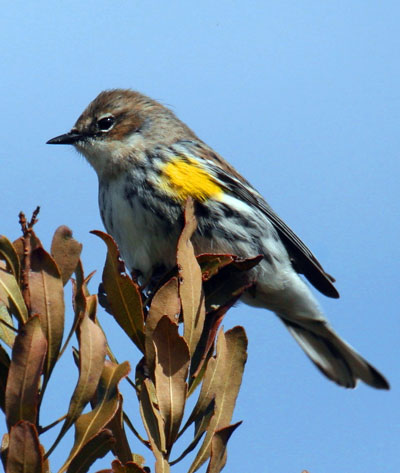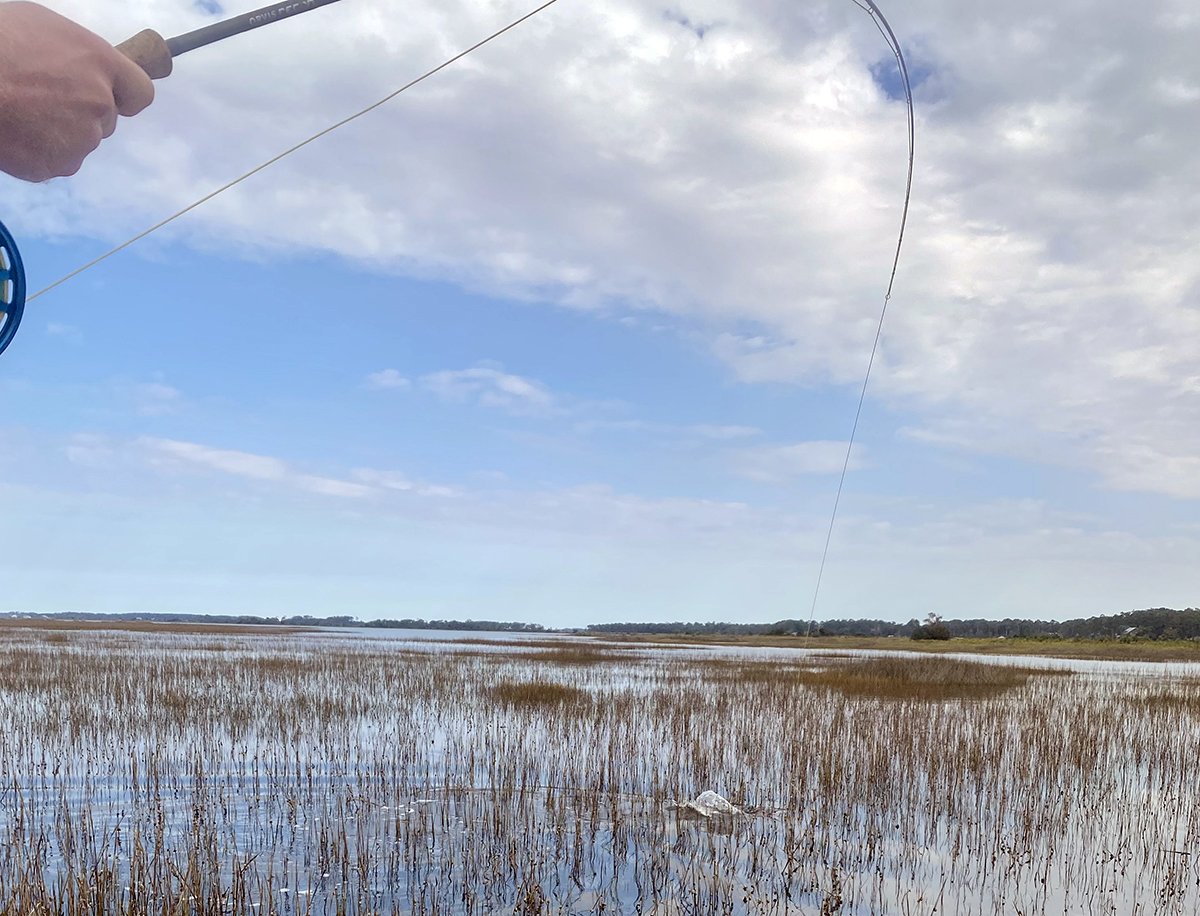During the winter months, I often take advantage of the cooler temperatures and the lack of pesky insects to hike through the interior of our undeveloped barrier islands: Bear Island, Shackleford Banks and Core Banks.
As I walk among the island shrub thickets, I am usually accompanied by yellow-rumped warblers (Dendroica coronata). The wax myrtle bushes are alive with yellow-rumps flitting about from branch to branch with sharp, crisp chirps splitting the air.
Supporter Spotlight
Affectionately known as “butter butts” because of their obvious yellow rump feathers, the birds seem to magically appear overnight in large numbers during late fall. In the eastern half of the United States, the yellow-rumped subspecies is also known as the myrtle warbler and as the Audubon’s warbler in the western states. It is thought that these two different types of yellow-rumps came about when they developed different physical characteristics after being separated by glaciers during the last ice age, 20,000 or so years ago.
 We know spring has arrived when yellow-rumped warblers no longer frequent our bird feeders. Photo: Sam Bland |
This plentiful, active, small songbird breeds in the dense coniferous forests of Alaska, Canada and in the western states. Like other songbirds, they will migrate south to spend the winter in milder climates. However, it can winter farther north than any other warbler due to its specially adapted digestion system. During much of the year, it will feed on a variety of abundant insects such as caterpillars, beetles, spiders, ants and mosquitoes.
However, during the winter when the insects are hard to find, these birds will feast on the berries produced by wax myrtles (hence, the name myrtle warbler), bay trees and Virginia creeper. As protection from the harsh salt spray that blows in off the ocean, the berries are wrapped with a waxy coating. Unlike other warblers, yellow-rumped warblers possess a special enzyme that allows them to digest the waxy coating covering the berries and thus receive nutrients from the berries. Since this food source is also available further north, the birds don’t need to migrate so far south in search of food. Consumption of these berries by the yellow rumps is beneficial for these plants since they will help disperse their seeds.
A wintering flock of yellow-rumped warblers will frequently call out with a chirp to keep in contact with each other while foraging. Soon, the yellow rumps will be migrating back north to mate and raise a couple of broods. While in flight as they migrate, the birds will also use the chirping call to keep the flock together during their long journey.
These little birds usually stay deep in the cover of the shrub thickets; however, a pishing sound will easily coax a yellow-rump to an exposed perch, offering a great look at these winter visitors.
Supporter Spotlight
Throw some sunflower seeds in the bird feeder. That will help fatten up the butter-butts for their journey north. When they have departed, we will know that spring is here.







